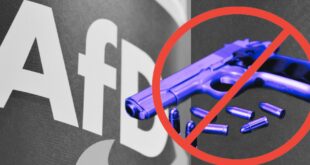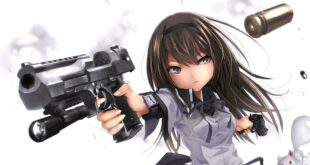F. Roger Devlin
Occidental Observer
December 3, 2013
Review of The National Rifle Association and the Media: The Motivating Force of Negative Coverage by Brian Anse Patrick; 2nd edition, London: Arktos Media, Ltd. 2013
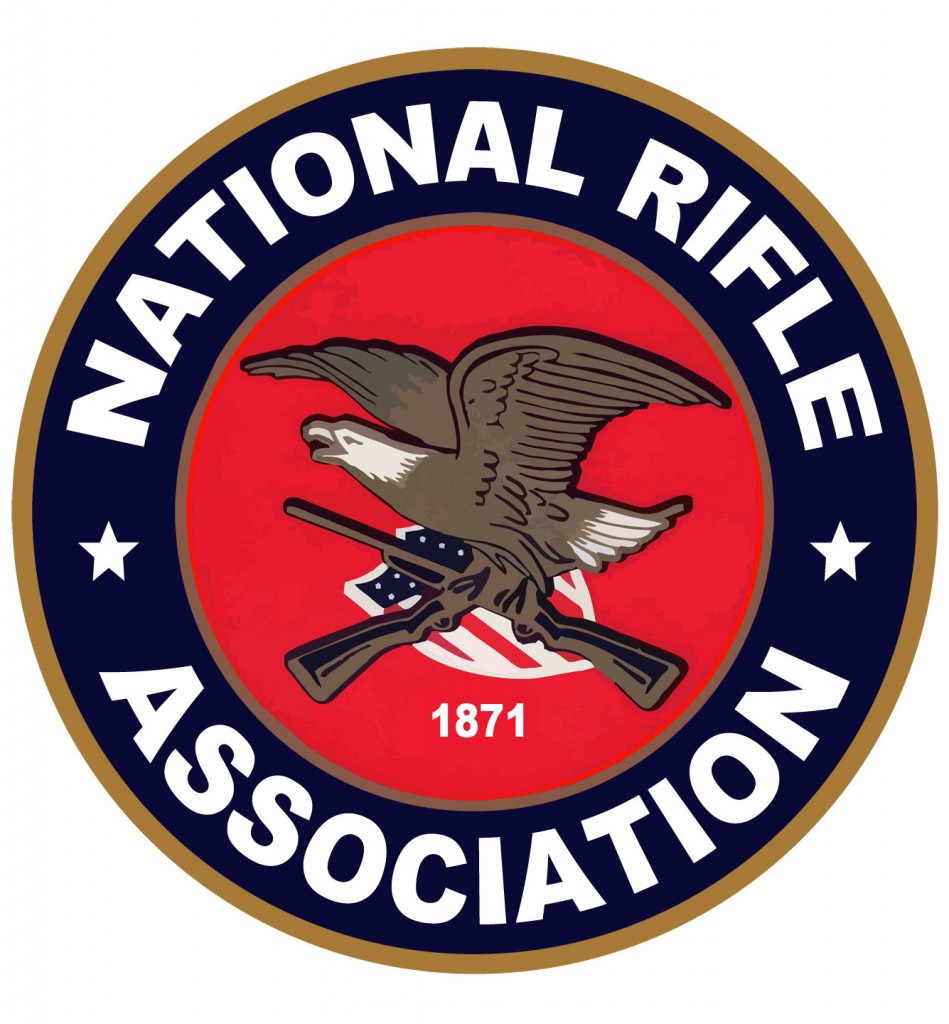
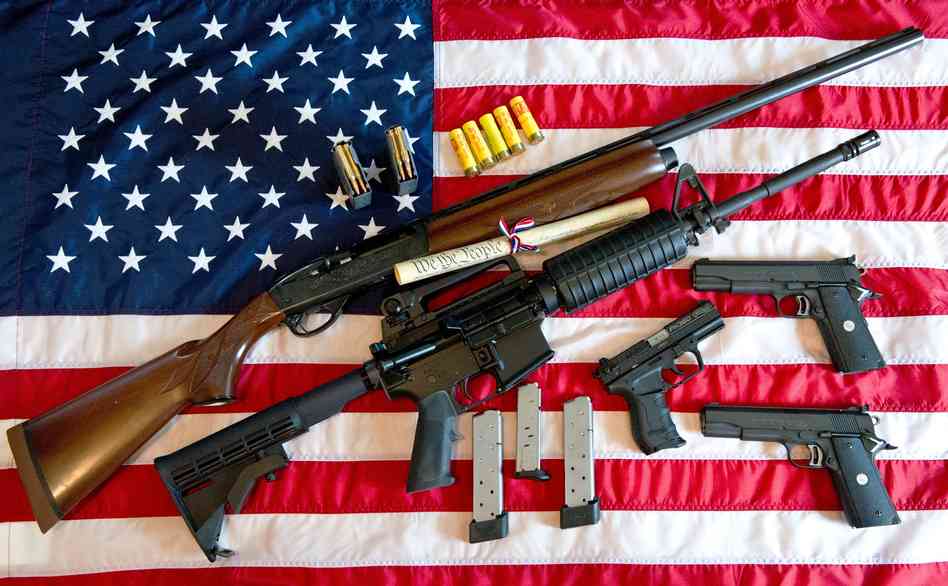 Arktos’s latest offering is a reprint (with a new foreword) of Brian Anse Patrick’s 2002 study of press coverage of the National Rifle Association between 1990 and 1998.
Arktos’s latest offering is a reprint (with a new foreword) of Brian Anse Patrick’s 2002 study of press coverage of the National Rifle Association between 1990 and 1998.
Some background: Well into the 1970s, the NRA was a largely apolitical organization serving the needs of about a million gun hobbyists. Following a 1977 reorganization, it became heavily involved in fighting legal restrictions on gun ownership through its new political action committee, the Institute for Legislative Action. In the years following, and despite public opinion polls revealing 83% support for an assault weapons ban and 90% support for a five-day waiting period for gun purchases, the NRA repeatedly succeeded in stopping, delaying or watering down nearly all proposed federal, state and local firearm restrictions, as well as proposed registration requirements. To this day, writes Prof. Patrick,
any adult citizen with proper identification who walks into virtually any of the thousands of K-mart or Wal-Mart retail stores in the United States, after filling out a federal self-disclosure form and satisfying the criminal history instant-check by telephone, can leave with a semiautomatic .22 caliber rifle and 1000 rounds of ammunition for not much more than $150 cash, check, or charge.
NRA membership has also been increasing steadily, surpassing five million in May 2013. The NRA is now a significant factor in many local, state and federal elections: Pres. Bill Clinton blamed the organization for the Republican takeover of the House of Representatives in 1994 and for Vice Pres. Al Gore’s loss of the 2000 presidential election. In short, the NRA is among the most successful interest groups of its kind.
In the empirical section of his book, Prof. Patrick compares press coverage of the NRA with that of four analogous organizations: Handgun Control, Inc. (now the Brady Center to Prevent Gun Violence), the American Civil Liberties Union, the National Association for the Advancement of Colored People, and the American Association of Retired Persons. In all, Prof. Patrick looked at 1474 articles from elite newspapers, using a quantitative method of content analysis which “allows for statistical comparisons that are highly reliable.”
He reaches three major conclusions:
1) “Statistics revealed a raw and naked bias of large magnitude …. I had expected to find some degree of bias against NRA and gun culture, but nowhere near the extent revealed by the analysis. My findings astonished me.”
2) “The second major finding was the mobilization effect of negative coverage [which] tangibly and substantially benefited NRA. More negative coverage equaled more NRA members in a very strong positive correlation.”
3) “A third finding was that journalists … got very uncomfortable and refused to explain themselves when they were asked questions; they seemed to hold themselves above accountability.”
Prof. Patrick also discusses various theoretical models of social action and determines which best match the practice of the NRA. This interpretive section of the book is essential for those of us working in other areas who would like to replicate the NRA’s stunning success. Of particular interest is his demonstration that the NRA makes use of certain communication techniques more commonly found on the radical left.
The author’s analysis of press coverage revealed fewer direct quotations from NRA spokesmen than from spokesmen of any other group; proportionally, quotations make up 8% of NRA articles, compared to 17% for Handgun Control and 25% for the other groups. While spokesmen for other organizations are often referred to by formal titles such as “communications director” or “legislative director,” NRA officials are usually identified only as “lobbyists.” Articles on the NRA also employ fewer photographs than articles on the other groups studied.
Many interest groups are able to get their message across by sponsoring media events such as press conferences, political demonstrations, annual conventions, and publication of reports or polls. Some “news reports” are nothing more than lightly edited press releases from favored groups. The NRA, uniquely, is more often mentioned in reports of media events sponsored by other groups (such as Handgun Control, Inc.) than in reports of its own events. Also uniquely, when NRA events are covered, articles sometimes mention that they are attempts at media manipulation, e.g., “Today, the NRA took its turn at media relations.” This is true of all media events by definition, but is only made explicit where the NRA is concerned.
Among the most significant ways news coverage can affect our perception of events is through personalization in ways favorable or unfavorable to a group. For example, a welfare-related story might “frame a welfare mother sympathetically, as a woman struggling for a better life for her children against social and economic inequality, or unsympathetically, as a slattern who is chronically lazy and irresponsible.” Dramatic accounts involving heroes and villains are more easily digestible by the general public than the scrupulous neutrality of a scientific report. What reporters call the “angle” of a story is simply the manner in which it is personalized.
One Washington Post story concerning a proposed gun restriction features a photograph of a father holding his child: “‘If this bill saves the life of one child,’ [he] said, choking back tears, ‘It’s worth it.’” Other gun-legislation articles feature mothers holding picture of their dead children.
Short, almost gratuitous accounts of the wounding of former presidential press secretary James Brady, whose wife, Sarah Brady, is currently chair of HCI, seem to be inserted in literally dozens of NRA articles that are otherwise impersonal. A typical cartoon … shows a fragile Mr. Brady in a wheelchair facing a gigantic and heavily armored tank labeled “NRA” that is bristling with grotesque weapons. The Bradys are described with terms such as characteristic zeal, effective advocate, consuming mission and relentless good humor and vitality.
NRA officials, on the other hand, are squinting, sweaty, husk of his old self and fascist at heart.
Journalistic style requires heavy use of verbs which attribute quotes or information to their sources. Such verbs may have positive connotations—found, showed, demonstrated—negative connotation—alleged, claimed, asserted—or be reasonably neutral—said, stated, reported. Among the verbs of attribution employed in covering the NRA the author found: bleat, whine, weasel-wording his way, likes to argue, would have everyone believe, touted in often shrill language, asking unctuously, claimed to believe, likes to portray, and or so they said.
The greatest difference the author found between coverage of NRA and that of other interest groups lay in the attribution of antidemocratic qualities to NRA:
[NRA] may feel that it has to continue to veto democracy. Government by those who scream the loudest. Pseudo-grass roots campaign. Obstructionist. Filibuster. Backroom political tactics. Public taken in by special interests. Stranglehold over national legislation.
In contrast, the author found talk of a Coalescing national demand for gun control by an overwhelming majority of Americans, and opined that [Congress] should heed the demand of 95 percent of the people. In writing of Handgun Control, Inc., “democracy themes are often put in grandiose positive terms such as groundswell of popular opinion, where HCI is shown as championing democracy and public opinion, sometimes as its embodiment.”
We have already mentioned that NRA membership has increased steadily over recent decades, and that the organization has enjoyed many legislative successes. Media reports of the 1990s, however, refer to:
Lost clout. Unprecedented setback. Membership shrinks. As its influence in Washington wanes. Debilitating defeat. Appear to be losing their grip. Steep decline in membership. In virtual shambles. Atrophying. Chain of recent defeats. Stinging defeat. Alienated its mainstream membership. Wounded. Death spiral.
These errors appear to have involved a combination of wishful thinking, overemphasis on occasional real but minor setbacks, and repetition of information from previous media reports (without new fact checking). This pattern continued through the end of the period studied until the year 2000, when the New York Times suddenly announced its discovery that NRA membership had, in fact, been trending upwards over the previous decade.
Unsurprisingly, it is on the editorial page that the NRA comes off the worst: Arrogant lobby. Vicious lobby. Strident lobby for the nation’s gun manufacturers. Intimidating lobby of weapons peddlers. Evil Empire. The evil and lavishly funded gun lobby. A fanatical organization that is awash in the blood of homicide and suicide victims. Handgun Control, Inc., on the other hand, is a Washington based non-profit group, a public interest [not “special” interest] group and a citizens’ lobby; the NRA is never described as a citizens’ lobby.
In sum, elite press coverage during the period 1990 to 1998 was most negative to NRA and most favorable to HCI; the AARP, NAACP and ACLU consistently came out in the middle.
In the interpretive section of his book, Prof. Patrick distinguishes three conceptions of social action, each with its appropriate political strategy: pluralism, mass democracy and social movement theory.
1) Pluralism is a Tocquevillean model of society as a collection of voluntary associations or interest groups. The opinions of the individual account for little, on this view, unless and until he joins a group: “only by means of association can the individual realistically hope to exert influence.” The focus on group action also serves to distinguish the commitment demonstrated by joining a group from mere subjective attitudes or opinions expressed in polls. Note that, while gun control enjoys widespread support in polls, the NRA enjoys more than ten times the membership of Handgun Control, Inc. There are more lifetime members of NRA than total members of HCI.
Pluralists tend to regard journalists as hacks who repackage and redistribute material that originates with others, or even as obstacles to the accurate communicating of a group’s message.
2) The mass democratic conception of social action sees such action as produced by the aggregation of individual votes, with the winner determining the outcome. The medium for translating individual opinion into social action is not the private interest group but the constitutional or bureaucratic apparatus of government. Voting, and sometimes even polling, are on this view better indicators of public opinion that the activities of private associations, pejoratively described as special interest groups, whose purposes are contrasted with the welfare of society as a whole.
The responsible exercise of one’s all-important right to vote, under the mass democratic conception, requires access to information unbiased by special interest groups. Journalists are, therefore, “an integral part of the structure of social action because they serve to connect the individual voter with policy makers.” Unsurprisingly, journalists themselves are attracted to this model of their profession
because it elevates them from mere functionaries, hacks and/or talking heads to the status of expert social guardians. In effect, mass media professionals become a priesthood charged with informational augury reading: they examine convoluted raw information and issue simplified interpretations of its meanings. The doctrine of a free press takes on religious overtones as well. Adversarial and watchdog models [“the notion of media standing as a watchdog over government”] are also well regarded under this approach … while lapdog tendencies are censured [for] not properly scrutinizing ideas and their sources. The press are charged with social responsibility and above all must not serve to legitimate special interests.
3) Social movement theory is a Marxist-derived view of society as constituted by classes of oppressors and oppressed. In its modern version, the salient classes need not be defined economically; they may include a variety of identity-axes such as Blacks vs. Whites, women vs. men, gays vs. straights, etc. These classes are thought of as clashing directly, like tectonic plates. Individual make their preferences felt through solidarity with the identity-class to which they belong. Group ideologies “allow individual participants to perceive themselves as warriors engaged in the struggle for a heroic cause.”
Social movement theorists see the mass media as “more or less overt instruments of social control or class-cultural dominance.” In Manufacturing Consent, for example, Herman and Chomsky develop a model of propaganda filters: “ownership concentration, huge start-up costs, centralization, structural bias, ideological bias, and elite class interests all intersect, and the net result is to keep the news free of inconvenient truths that might seriously threaten ruling/owning class control.” Journalists are, in the language of classic Marxist agitprop, “lackeys of the bourgeoisie”; or, phrased more generally, tools of the oppressor class: white people, the patriarchy, heterosexuals, etc. Needless to say, this model is not popular with journalists themselves.
An important strategy for social movements is to teach followers how to “decode” official media coverage by (supposedly) stripping away the obfuscations and biases of official news reports. In this way, even the most hostile negative coverage can be reinterpreted in ways which reinforce group ideology. Prof. Patrick believes that such decoding and reinforcement, although usually associated with leftist movements, has been a key to NRA success in recent years. The NRA has developed publications of its own—a kind of counter-media—in which much space is dedicated to dissecting hostile coverage in the elite media. This is red meat for the NRA’s constituents, with a strong mobilizing effect on them. NRA membership numbers correlate with negative media coverage at a rate of .654, as revealed by this chart:
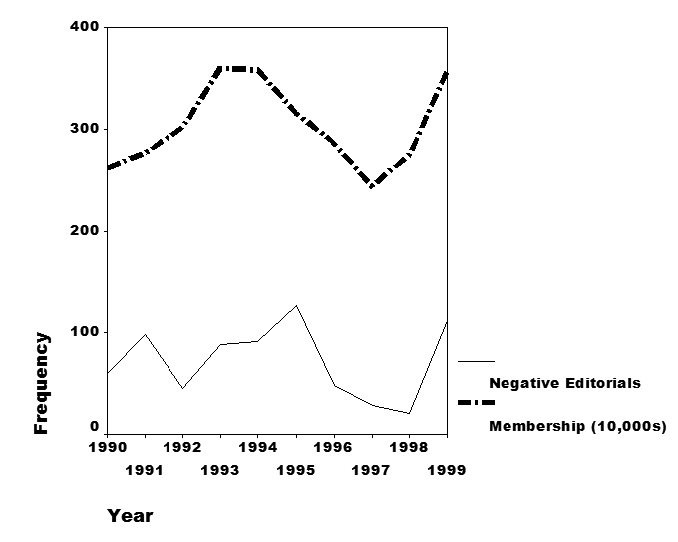 Membership numbers correlate at a significantly lower rate with media coverage in general; it is specifically negative coverage that shows the high correlation.
Membership numbers correlate at a significantly lower rate with media coverage in general; it is specifically negative coverage that shows the high correlation.
To summarize: The elite media overwhelmingly operate under the assumptions of mass democracy, while the NRA is a hybrid: an originally pluralistic interest group that increasingly makes use of social movement tactics in countering media hostility. Within Prof. Patrick’s interpretive scheme they are, so to speak, perfect enemies.
In Prof. Patrick’s view, the NRA’s hybridism is an organizing principle that might be successfully imitated by other groups. Applying this thought in a manner the author never does, we can see much writing on The Occidental Observer as a “decoding” of the real significance of elite media stories (TOO has 68 articles in the category of media bias, including this one). Over at American Renaissance, Jared Taylor’s recent demolition of the 2012 Hate Crimes Report is another example of such demystification. Trevor Lynch and Ed Connolly have performed an important analogous task in regard to Hollywood movies.
But where is the voluntary association that unites ordinary white people? We ought to have the biggest interest group in the country, and yet it is nowhere to be found. The NRA already had a long history as a pluralistic interest group before it created its own alternative media and began “decoding” hostile elite coverage. Have we been putting the cart before the horse?
An interesting secondary finding of Prof. Patrick’s study was that, next to the NRA, the ACLU receives the most negative media coverage among the groups he studied. This, of course, does not fit in with the widespread notion of a left/liberal media bias. Do the NRA and the ACLU, despite being at opposite ends of the conventional political spectrum, share some trait which might serve to explain their common unpopularity with elite media? Prof. Patrick believes they do.
We have seen that elite media tend to interpret social action and their own role in it according to a mass democratic paradigm. Closely related to this way of thinking is a tendency to “interpret the world essentially as a managerial problem to be solved by professional, expert administration.”
Citizen participation reduces here to … voting by pulling a lever. Administrators rule in the name of public service, legitimated and ensconced within the constitutional apparatus of government, their policies and the length of their tenures warranted by plebiscite or opinion surveys. Political participation affirms the legitimacy of the administrative democratic system. The good citizen, in administrative democracy, is an informed participant who, having been made aware of the available options, pulls the lever indicating “choice.” Mass media do most of the aware-making and therefore occupy a dominant position in the information market: they are utterly integral to the operation of the administrative democratic process.
What organizations like the NRA and the ACLU have in common is that both tend to position themselves athwart the road of administrative design…. ACLU often confounds administrative attempts to implement efficiently rational, scientific policies in educational settings, workplaces, law enforcement interactions, prison environments and other social institutions…. The ACLU is sometimes shown as frustrating democracy in its pursuit of its absolutist visions of constitutional rights. The will of the majority is ignored because ACLU has insisted on some arcane, occasionally absurd, point of law.
The relatively negative treatment of the ACLU indicates that elite media are less in the grip of left/liberal bias than of an administrative control bias. The administrative mindset “organizes, manages, objectifies and looks downward toward a subject world that has been defined in such a way as to beg administration or clinical style intervention.”
And it is difficult to think of anything more foreign to smooth, reliable, efficient administrative control than deadly weapons widely distributed among the subject population.
The potential for uncoordinated violence represented by guns is a threat to administrative control. Guns simply invite administration. Correspondingly, it can be seen that the underlying message of NRA coverage is that NRA defies regulation, rational democratic administration [and] common sense. NRA organizational actors require clinical, psychological interpretation.
Among the descriptions collected of NRA personal and activities, the author found:
Wild-eyed. Delusional, almost deranged rant. They want to avoid reality at all costs. Paranoid fantasies. Fans lunatic flames. Screw loose. Crazed. Certifiably kook position. Vintage NRA hysteria. Frantic. Social insanity. Wacky. Monomaniacal. Irrational. Paranoid stance. Lunacy.
As Prof. Patrick says, this helps to explain the dearth of direct quotations from NRA representatives. When you are dealing with crazy people, you do not ask them to diagnose themselves; you seek out trained experts to interpret their words and behavior for you. In the case of the NRA, journalists believe they are the relevant professionals upon whom the public can rely.
For those not in thrall to the administrative mindset, a better analogy might be sluggish schizophrenia, the mysterious mental disorder which suddenly began striking political dissidents—and only political dissidents—in the USSR in the 1970s.
There are powerful people abroad in the land who would not hesitate to view regular readers of websites like The Occidental Observer as patients requiring a therapy they have the expertise to administer. One of the few things still standing in the way of their plans is the knowledge that a substantial number of us are armed.
Let’s keep it that way.
 Daily Stormer The Most Censored Publication in History
Daily Stormer The Most Censored Publication in History
